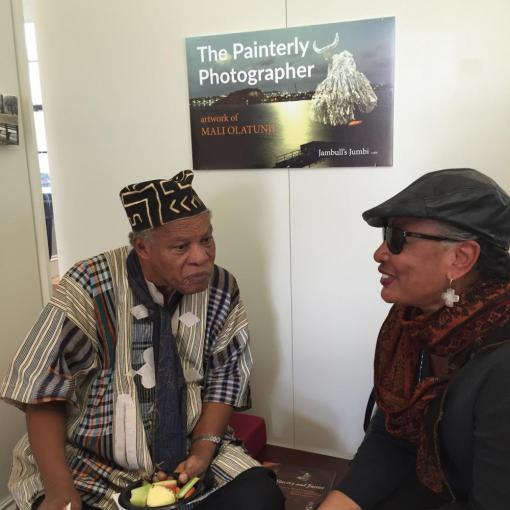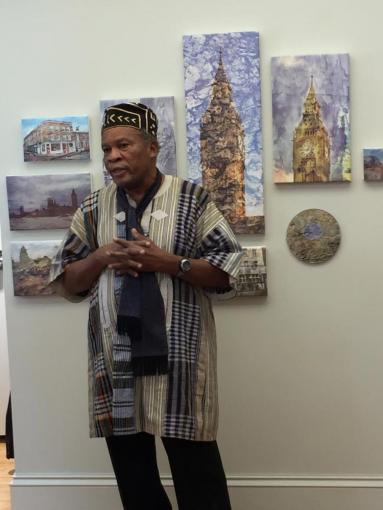On display in the Center for the Study of Slavery and Justice Gallery through January 21, 2016
 The new technique is the use of lines and textures of wood, of tree bark, and leaves, to enhance the capabilities of photography for symbolic rather than documentary representation. Olatunji’s original vision derives from his attempts to imagine our world through “the eyes” of a Jumbie or a departed soul that has taken up residence in a tree.
The new technique is the use of lines and textures of wood, of tree bark, and leaves, to enhance the capabilities of photography for symbolic rather than documentary representation. Olatunji’s original vision derives from his attempts to imagine our world through “the eyes” of a Jumbie or a departed soul that has taken up residence in a tree.
Photography has long been a visual practice that has educated our senses and thus has been able to shift established cognitive balances and to establish new treaties between our various aesthetic and intellectual sensibilities. As a breakthrough development, Olatunji’s painterly photography is likely to shift existing balances between painting and photography, forging new treaties between these two sensibilities. In bringing these new treaties with painting into being, Olatunji’s work provides fresh evidence for the fine arts possibilities of photography.
 As a Caribbean artist, Olatunji’s photographs go beyond the shores of the region to incorporate the immigrant dimensions of the Caribbean experience. This diasporic extension accounts for the pictures in this exhibition, which are from New York and London, along with those from his homeland of Antigua and Barbuda. The photographs from Antigua and Barbuda explore themes such as the impact of slavery and colonialism, their continuing influence on contemporary life in his home society, and the prospects for overcoming them.
As a Caribbean artist, Olatunji’s photographs go beyond the shores of the region to incorporate the immigrant dimensions of the Caribbean experience. This diasporic extension accounts for the pictures in this exhibition, which are from New York and London, along with those from his homeland of Antigua and Barbuda. The photographs from Antigua and Barbuda explore themes such as the impact of slavery and colonialism, their continuing influence on contemporary life in his home society, and the prospects for overcoming them.
The photographs of New York explore the ambivalences in the experiences of Caribbean migrants to this city. On the one hand, these photographs capture the feelings of homesickness, alienation, racial exclusion and the stony nature of New York’s urban environment. On the other, they also capture the musical excitement, the sense of opportunity, both educational and professional, that continues to attract Caribbean migrants to New York.
 The photographs of London are for the most part visual representations of the anti-imperial impulses that sustained the movement for national independence. Among these images, the photograph in which Big Ben is stopped from setting time, for both Londoners and the empire, is most telling.
The photographs of London are for the most part visual representations of the anti-imperial impulses that sustained the movement for national independence. Among these images, the photograph in which Big Ben is stopped from setting time, for both Londoners and the empire, is most telling.
Together these photographs make powerful statements about the Caribbean region and also about the painterly possibilities of photography as a visual art.
CSSJ Gallery hours are Monday-Friday 9AM-4:30PM, 94 Waterman Street.